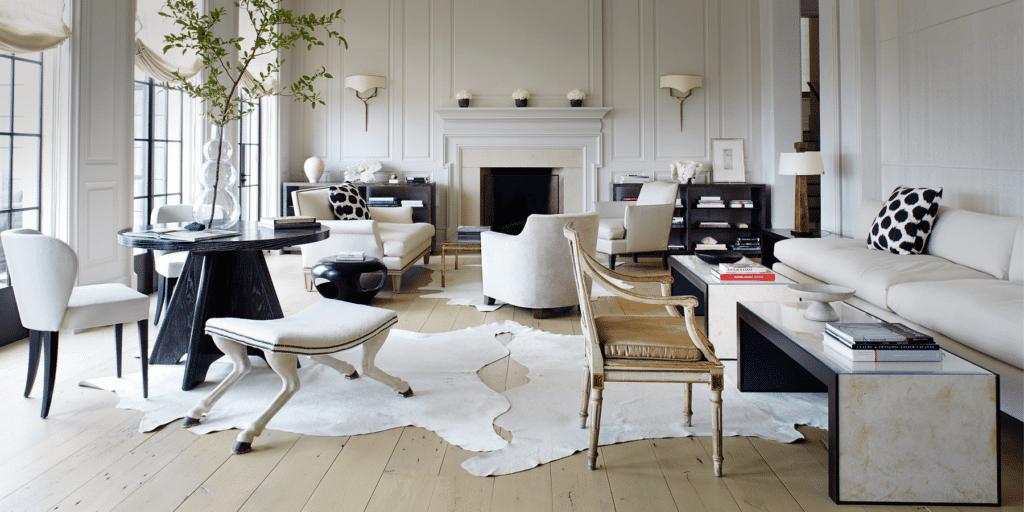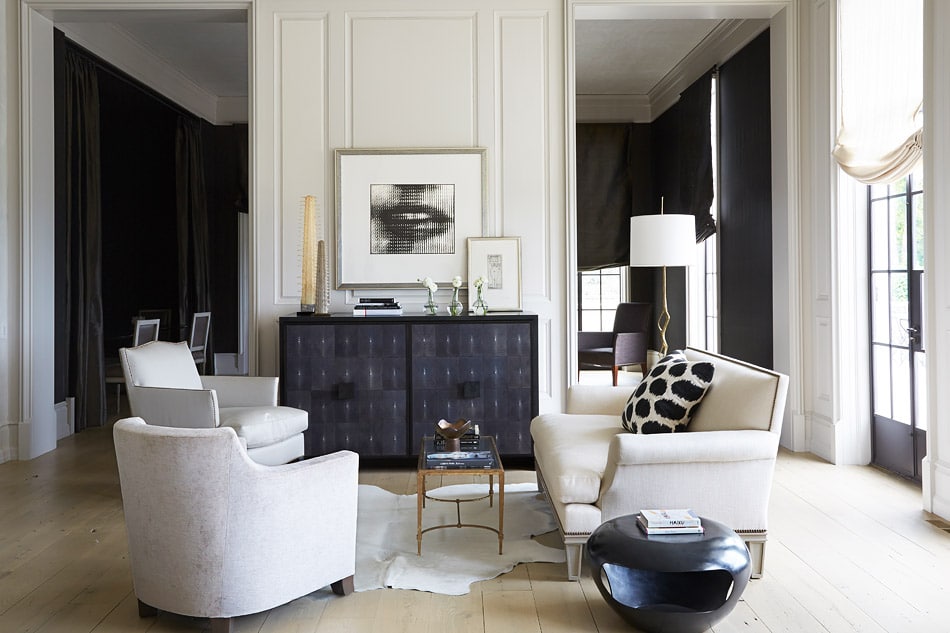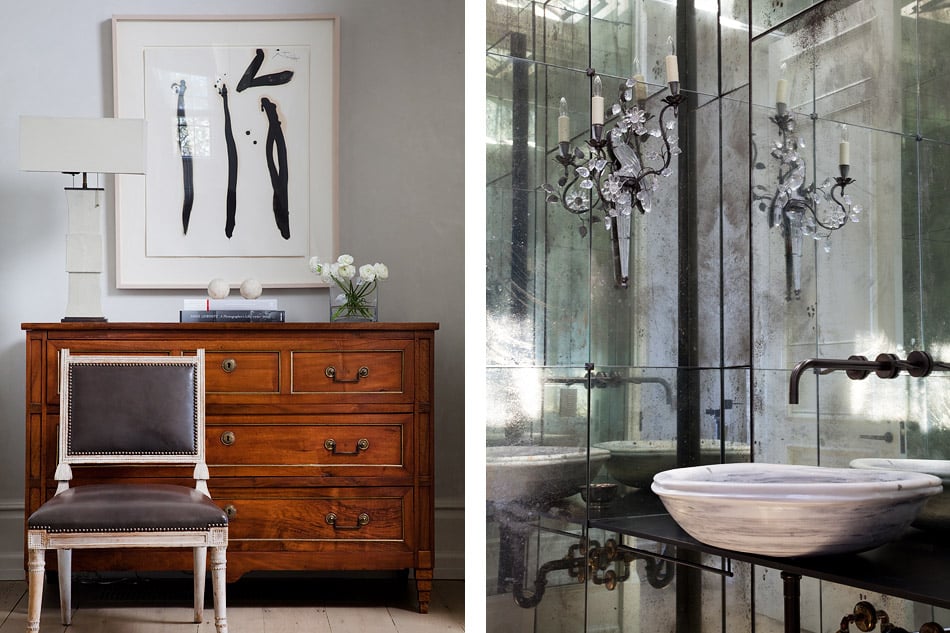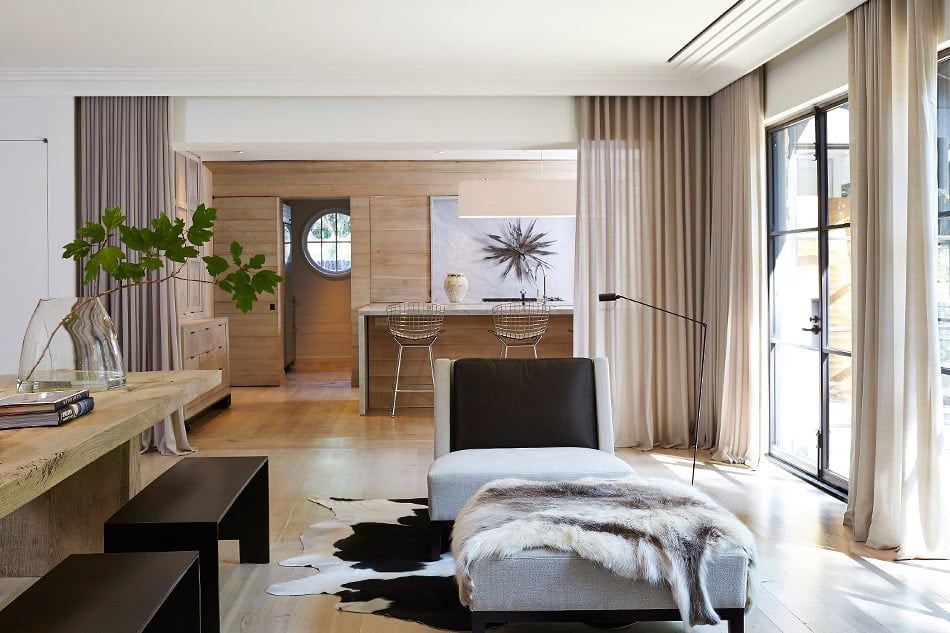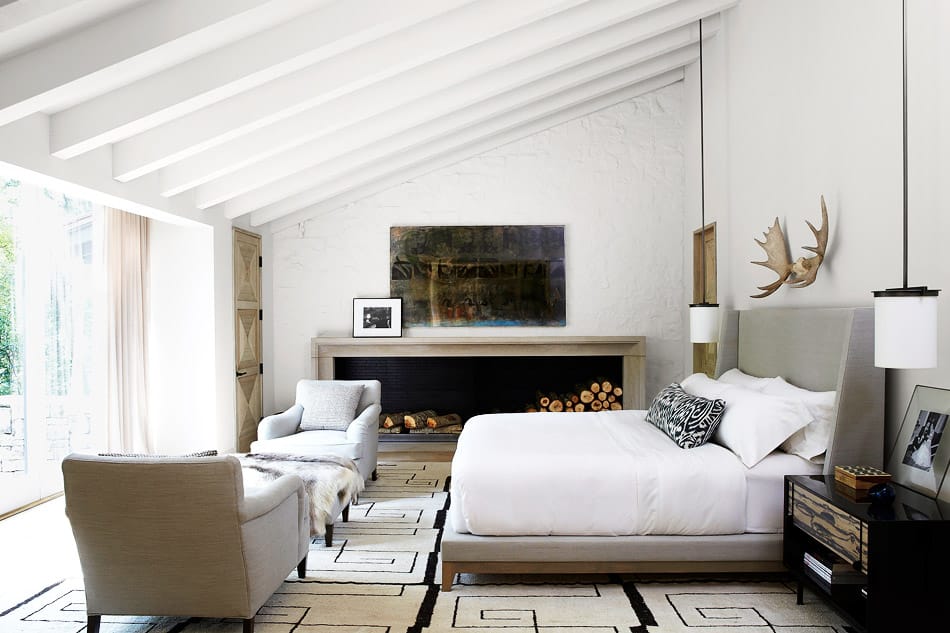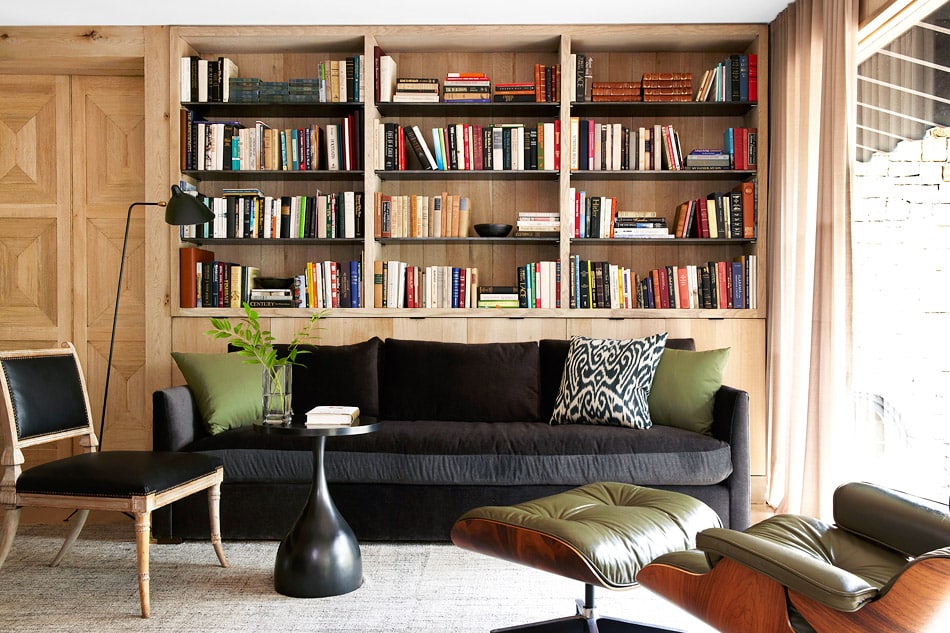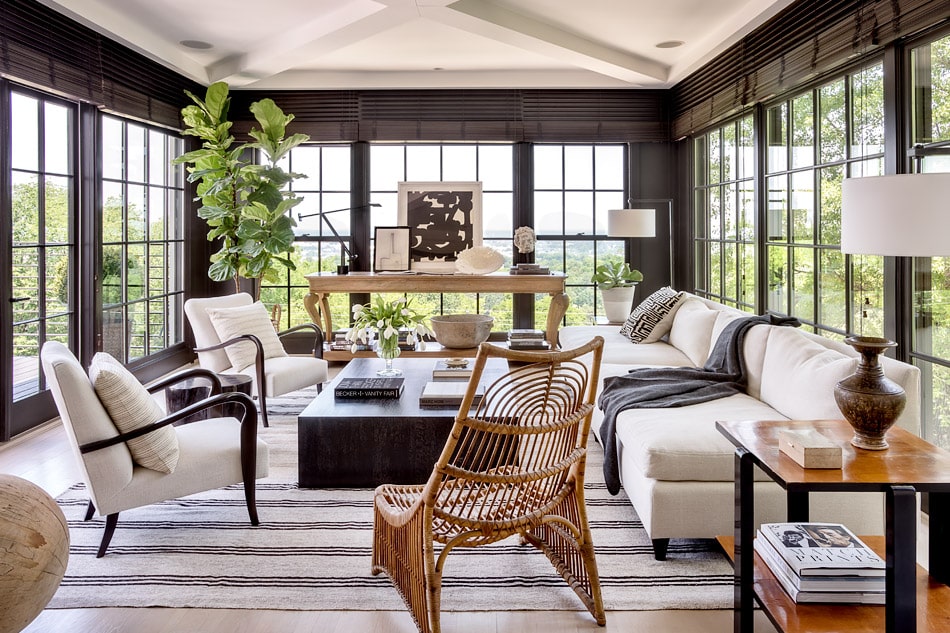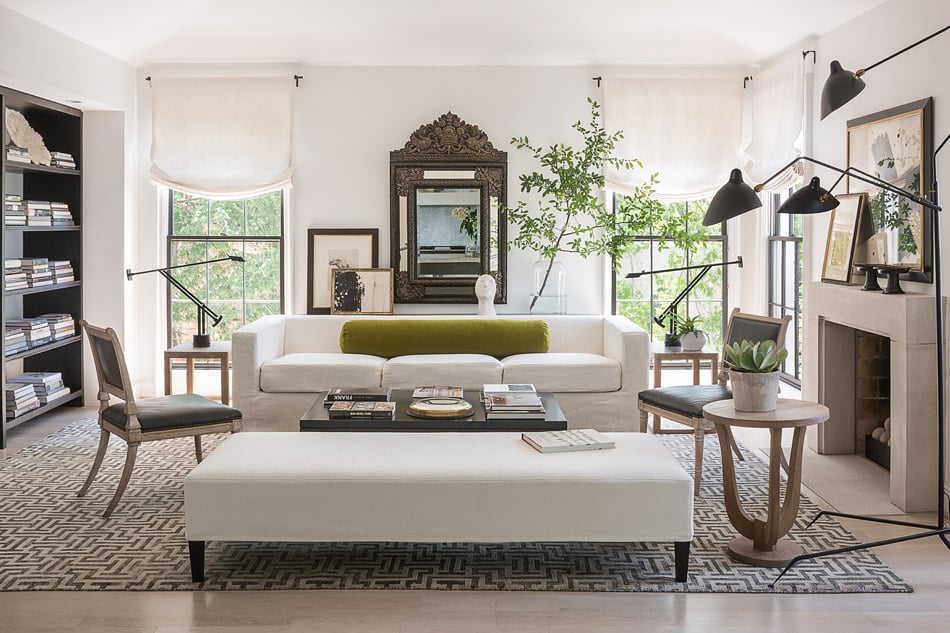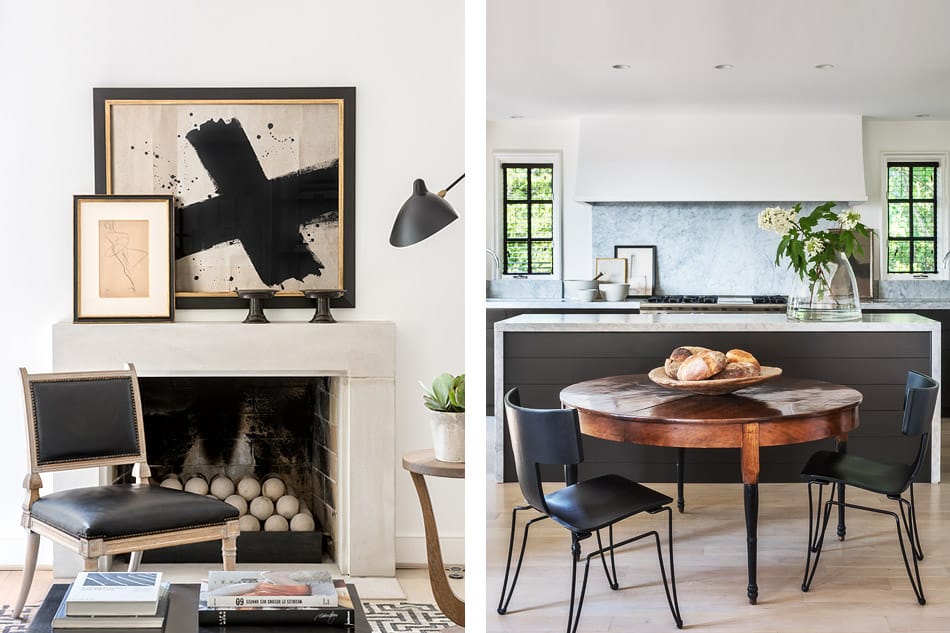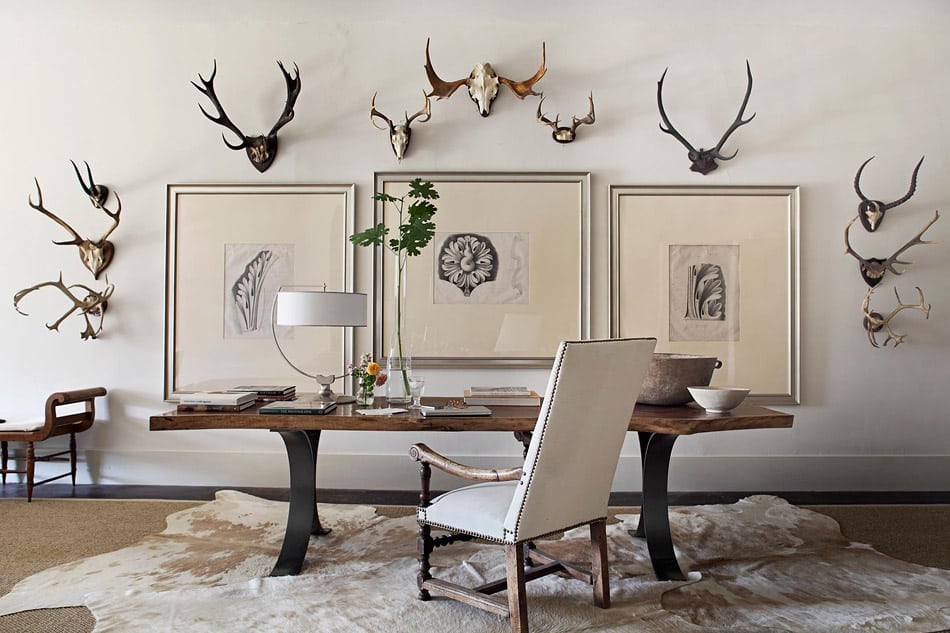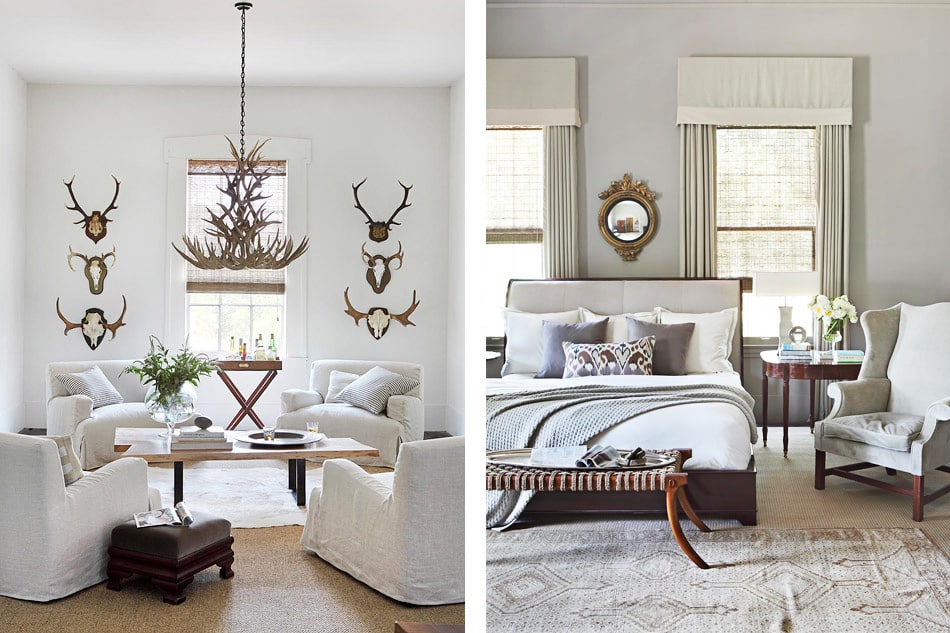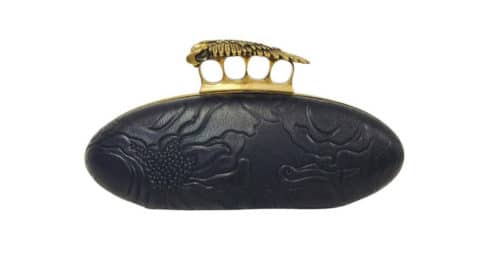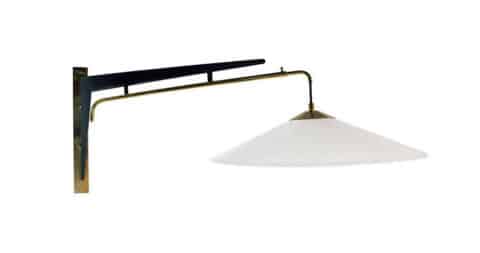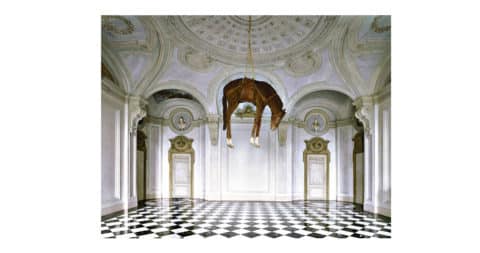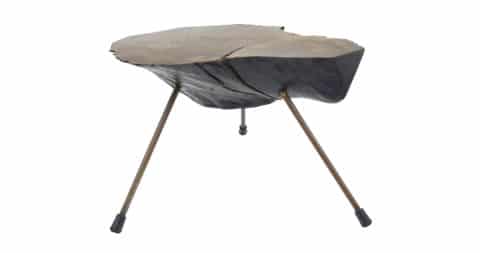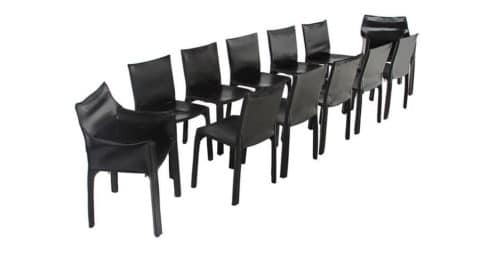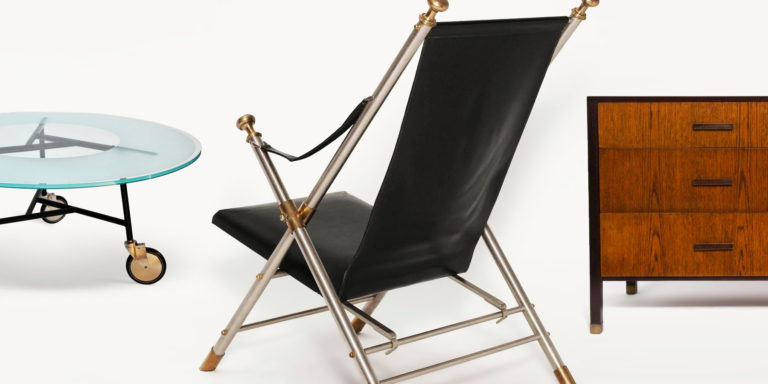
January 23, 2017Betsy Brown’s elegant, edited designs are a departure from the detailed, feminine spaces that were popular in the South when she started her career (portrait by Lewis Kennedy). Top: A neutral palette adds a freshness to this Birmingham, Alabama, living room. The French Moderne dining table is from Bardin Palomo, and the Felix Agostini bronze wall sconces are from Galerie Yves Gastou (photo by Jean Allsopp).
My mother, who was an antiques dealer, was obsessed with interiors, and our house was always torn up,” says Mountain Brook, Alabama-based designer Betsy Brown, recalling her childhood in Birmingham. “Because there was never any furniture in our living room, there was a rumor in the neighborhood that my dad, was in the Mafia, and we were always ready to make a quick getaway or flee a gambling debt.” (He was actually an engineer, whose influence, Brown feels, has helped her visualize spaces in three dimensions.) “When my mother finally did pull it together,” she continues, “the living room was gorgeous. But it was a struggle for her until something clicked.”
Her mother’s obsession, Brown says, propelled her into a career in interior design. (Her older sister, Sally Partridge, is also a designer, while a younger sister, Connie Sherrod, owns a steel business.) But it could be off-the-wall. “She would get really upset when it wasn’t just right,” Brown explains. “It made me understand why clients can become upset when their houses aren’t what they want and don’t represent who they are. My mother was also a collector and shopper, and we as children had to do it with her. It was torture. I love antiques, but picking through thousands of things — it felt like too much.”
Those early experiences are “likely why I developed a desire to use bigger, simpler strokes,” Brown says. Indeed, she has spent nearly 30 years refining her palette and her bag of decorating tricks. Like John Saladino and such younger designers as Washington, D.C.–based Darryl Carter, she finds the many shades of pale — from warm ivory to immaculate gallery-wall white — endlessly fascinating. Black is almost always present, too, in the form of gestural abstract art, dusky upholstery or cowhide rugs with inky splotches. Carefully selected antiques infuse this potentially stark palette with age and warmth. And natural textures — linen, well-oiled wood floors and paneling, sea grass or sisal — give her rooms a sense of comforting, enveloping tactility. One experiences Brown’s spaces with all the senses.

In this Mountain Brook, Alabama, home, a custom walnut coffee table by Betsy Brown Inc. is positioned in front of a pair of Bouddha armchairs by Christian Liaigre. The red artwork on the antique French worktable is by Antoni Tàpies. Photo by Jean Allsopp
“I have kind of typecast myself with black and white,” Brown concedes. Which is not to say she is averse to color. “I love red, and the way John Saladino used lavender, like a shadow color that’s not heavy,” she says. “I also like green, because here in Alabama it’s right outside all the time. It’s not like you’re bringing in another color.”
Brown’s style was slow to evolve. She studied interior design at Auburn University for two years before transferring to the University of Alabama, where she earned a bachelor’s degree in 1976. Her first job out of college was a yearlong stint with local decorator Doris Schuler. “She was a wealthy grande dame who did beautiful Sister Parish–type rooms,” recalls Brown. “She had everything made for her.” Most of those custom pieces and treatments were fabricated by artisans at Hawkins Israel, a design workshop established by Harry Hayden Hawkins in Birmingham in 1929 and still operating in Mobile and Tuscaloosa. “They had a huge building filled with painters, muralists, furniture makers and other craftsmen, and they produced everything in one office,” says Brown, who worked at the atelier as an in-house interior designer for three years in the late 1970s. She credits these first jobs with teaching her “the way things were built. It amazes me how designers come out of school never really having learned that.”
When she struck out on her own, in 1982, Brown says, “it surprised me that I had opinions that weren’t anybody else’s. I liked things that were more tailored and masculine. In the South, women dominated the field, and everything was more detailed and feminine. I think what we do here looks a little strange for Birmingham.” Although she married and “raised a trio of ardent feminists,” the seriousness with which she took her career eventually caused conflict at home. “Among other things, I was tired of defending the fact that my work was not a woman’s hobby to be conducted when all other wifely duties were done,” says Brown, who stuck it out for 26 years before divorcing. Fortunately, she says winkingly, “even some Southern men have come a long way since then.”
Brown’s clientele has changed too. Although it remains mixed, many younger people tend to gravitate to her comfortably minimalist environments. “I want everybody’s house to seem like it’s totally a place to let down your hair and not worry about how cool it is,” she says. “When you walk into your house, your blood pressure should immediately drop.”
“It surprised me that I had opinions that weren’t anybody else’s. I liked things that were more tailored and masculine.”

A side entry doubles as a sitting area in this Camden, Alabama, home. The Louis XV settee is from the Gables Antiques Inc., the primitive stools from Négrel Antiques, and the French buffet from English Accent Antiques. Photo by William Abranowicz
That effect depends first and foremost on editing, Brown explains. “Editing gives a space power. It’s nice to see how layers of time make a room feel. But going in and pulling out what’s not needed is equally important.”
She enhances this soothing effect with a reductive palette of well-considered colors and materials, as well as a near absence of pattern, which make few demands on minds frazzled from the daily melee of contemporary life. Brown’s rooms feel open and airy, and her purposeful deployment of historical accents and forms, as well as gently worn finishes and the occasional vintage textile, ground them in time and inject a touch of melancholy romanticism while remaining resolutely modern. They exude an elegance and sophistication that feels more organic than self-important or contrived.
This organic elegance has become her signature, one appreciated by a clientele eager to keep her busy. She is currently handling 10 residential projects (“Really too much,” she says), and her work has taken her to London, Jackson Hole, Charleston, Atlanta and Washington, D.C. So why, one might wonder, is she not better known? Although House Beautiful has named her one of its “Top 125 American Designers,” you will not find scores of splashy magazine spreads on her website.
It’s just not in Brown’s DNA to seek out publicity. In fact, the woman is much like the rooms she designs. “I’m an introvert,” she says. “Working creates an environment where you have a small pack that sticks together. I think many of my clients are kind of introverted too — intelligent and understated.” With a slightly self-conscious laugh, she adds, “Or maybe that’s my own projection.”
Betsy Brown’s Quick Picks on 1stdibs
